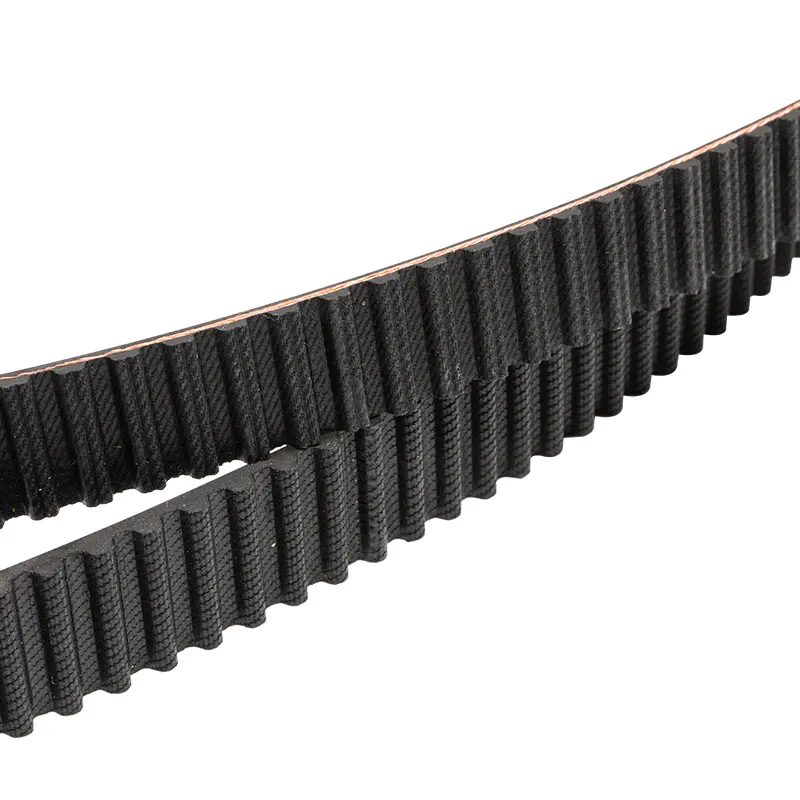CR (chloroprene rubber) timing belts are designed to offer good resistance to various environmental factors, including exposure to automotive fluids like oil and coolant. Chloroprene rubber is known for its good chemical stability and resistance to oils, making it a suitable material for automotive applications where such exposure is common.
However, while CR rubber has inherent resistance to these fluids, prolonged or excessive exposure can still bring about degradation over time. The performance and lifespan of the belt can be affected by the following:
Oil Resistance: CR rubber timing belts are engineered to offer substantial resistance to oil exposure, a common requirement in automotive environments. Chloroprene rubber's chemical composition inherently provides good resistance to oil, helping to maintain the belt's structural integrity and performance over time. Chloroprene rubber contains molecular structures that resist absorption and swelling when in contact with oil. This characteristic helps to ensure that the belt retains its tensile strength and flexibility. Despite this resistance, continuous or excessive exposure to oil can bring about softening and swelling of the CR rubber. This degradation can compromise the belt’s ability to maintain proper tension and synchronization within the engine. Regular inspections for oil leaks and maintaining a clean engine environment are crucial. Addressing any oil leaks promptly can significantly extend the lifespan of the CR rubber timing belt.
Coolant Resistance: CR rubber timing belts also exhibit good resistance to automotive coolants. This is essential in preventing degradation caused by the mixture of water, antifreeze, and other chemical additives present in coolants. The chemical stability of chloroprene rubber helps it withstand exposure to coolants without significant deterioration. This property ensures that the belt remains effective in a variety of thermal conditions. Similar to oil, prolonged exposure to coolant can eventually bring about chemical degradation. Over time, this can manifest as cracking, hardening, or loss of elasticity in the belt material. Regular checks for coolant leaks and ensuring the cooling system is in good working order can help prevent prolonged exposure of the timing belt to coolant. Keeping the engine compartment free from spills can also aid in maintaining the belt’s condition.
Combined Exposure: In automotive environments, timing belts may be exposed to a combination of oil, coolant, and other contaminants. This combined exposure can accelerate the wear and tear of CR rubber timing belts. The simultaneous presence of multiple fluids can create a harsher chemical environment for the CR rubber. This can bring about more rapid degradation compared to exposure to a single type of fluid. Users should regularly inspect the timing belt for signs of combined chemical damage, such as cracking, swelling, softening, or hardening. These signs indicate that the belt’s material properties are being compromised. Maintaining overall engine health by fixing leaks, ensuring proper fluid levels, and conducting regular maintenance checks can help mitigate the risks associated with combined fluid exposure. Using high-quality CR rubber belts designed for enhanced resistance can also provide additional protection.
It is important to regularly inspect CR rubber timing belts for signs of degradation, especially if the engine has fluid leaks. Maintaining a clean and dry engine compartment can help maximize the lifespan of the timing belt. If you notice any signs of wear, such as cracking, swelling, or softness, it may be necessary to replace the belt to prevent potential engine damage.
CR Rubber Automotive Timing Belts




 English
English 中文简体
中文简体

 View More >>
View More >> View More >>
View More >> View More >>
View More >> View More >>
View More >> View More >>
View More >> View More >>
View More >> View More >>
View More >> View More >>
View More >> View More >>
View More >> View More >>
View More >> View More >>
View More >> View More >>
View More >>
